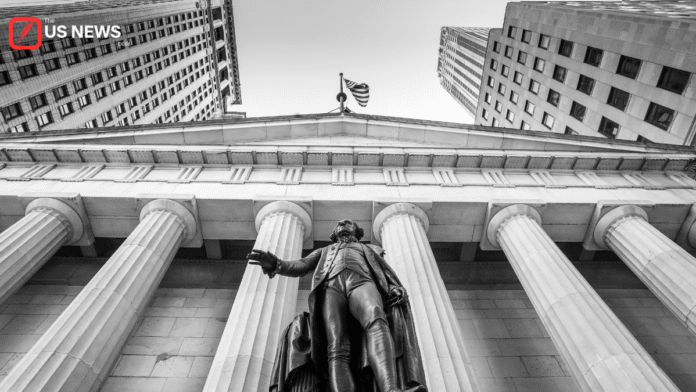Wall Street is entering another tense week as investors weigh the Federal Reserve’s next policy move. With inflation pressures lingering, a cooling yet resilient labor market, and uneven growth across U.S. regions, the central bank’s decision is set to ripple far beyond trading floors.
Markets are not only questioning whether the Fed will raise or hold interest rates, but also how those choices will affect borrowing costs, consumer confidence, and the political climate ahead of the 2026 elections.
Inflation: Still Stubborn, Still Defining Policy
After more than two years of aggressive tightening, inflation has slowed from its 2022 peak but remains above the Fed’s 2% target. Core inflation, which excludes volatile food and energy prices, has proven sticky, raising concerns that wage growth and housing costs could keep upward pressure in place.
For businesses and households, that translates into:
- High mortgage rates weighing on housing demand in the Midwest and South.
- Elevated food and energy costs squeezing consumers in rural and agricultural states.
- Persistent rent increases hitting coastal cities where supply remains constrained.
The Fed faces a delicate balancing act: ease too soon and risk an inflation rebound, or stay tight and risk throttling growth.
The Labor Market Factor
The U.S. labor market continues to send mixed signals. Job creation has slowed compared to the post-pandemic surge, but unemployment remains historically low.
Recent data from the Bureau of Labor Statistics shows:
- Wage growth moderating in sectors like retail and hospitality.
- Manufacturing jobs softening in the Rust Belt as companies adapt to higher borrowing costs.
- Tech and finance employment steady, especially in hubs like California and New York.
This uneven dynamic complicates the Fed’s calculus. A weaker labor market would typically argue for rate cuts, but as long as consumer spending remains steady, the Fed may hold firm.
Regional Impacts: Not All Economies Are Alike
The effects of Fed policy are never uniform across the United States.
- Northeast & West Coast: High housing costs make these regions sensitive to mortgage rates. Even slight policy adjustments affect affordability.
- Midwest: Manufacturing-heavy economies tied to auto and steel production face sharper slowdowns when credit tightens.
- South & Sunbelt States: Continued population growth has kept construction active, but higher interest rates risk stalling commercial real estate development.
- Energy Belt (Texas, Oklahoma, Louisiana): Oil and gas sectors benefit from higher commodity prices, partially shielding them from national trends.
This patchwork economy underscores why Wall Street traders obsess over every Fed signal — the impacts are far-reaching and varied.
Investor Sentiment: A Market on Edge
Markets are pricing in uncertainty. Equity indices have swung sharply in recent weeks, with investors attempting to front-run policy shifts.
- Treasury yields remain elevated, reflecting expectations of prolonged higher rates.
- Banking stocks have shown volatility, with regional lenders particularly vulnerable to loan demand slowdown.
- Tech stocks remain buoyant, buoyed by AI enthusiasm, but face risks if borrowing costs stay high.
Financial analysts at Bloomberg note that investor psychology is now as important as economic data. Every Fed press conference has become a high-stakes event.
What’s at Stake for Households and Businesses
The Fed’s next move isn’t just a Wall Street story. It will shape the decisions of ordinary Americans:
- Families considering home purchases.
- Small businesses deciding on expansion loans.
- Local governments planning infrastructure projects.
In many ways, the central bank’s influence is as local as it is global. For towns in the Midwest reliant on factory jobs, or entrepreneurs in Texas seeking venture capital, interest rates can determine the difference between growth and stagnation.
The Broader Picture: Fed Policy Meets Politics
The timing of these decisions also carries political weight. With the 2026 midterms approaching, inflation remains a top concern for voters. Any perceived misstep by the Fed — tightening too much or loosening too early — could influence the national mood and campaign narratives.
Economists argue that the Fed must keep its independence, but history shows monetary policy inevitably intersects with politics.
Conclusion
Wall Street’s nervous anticipation reflects more than market jitters. The Federal Reserve’s decisions will set the tone for inflation, jobs, and growth across every region of the United States.
Whether the next move is a pause, a hike, or a long-awaited pivot toward cuts, the ripple effects will touch Main Street as much as Wall Street. And with the economy still walking a tightrope, investors and citizens alike are bracing for impact.




